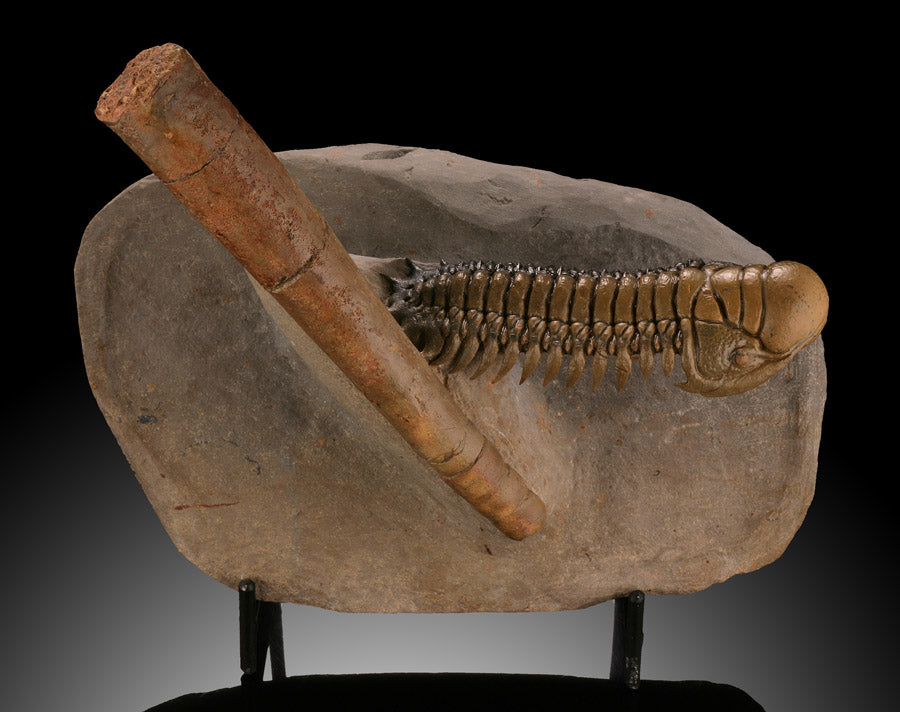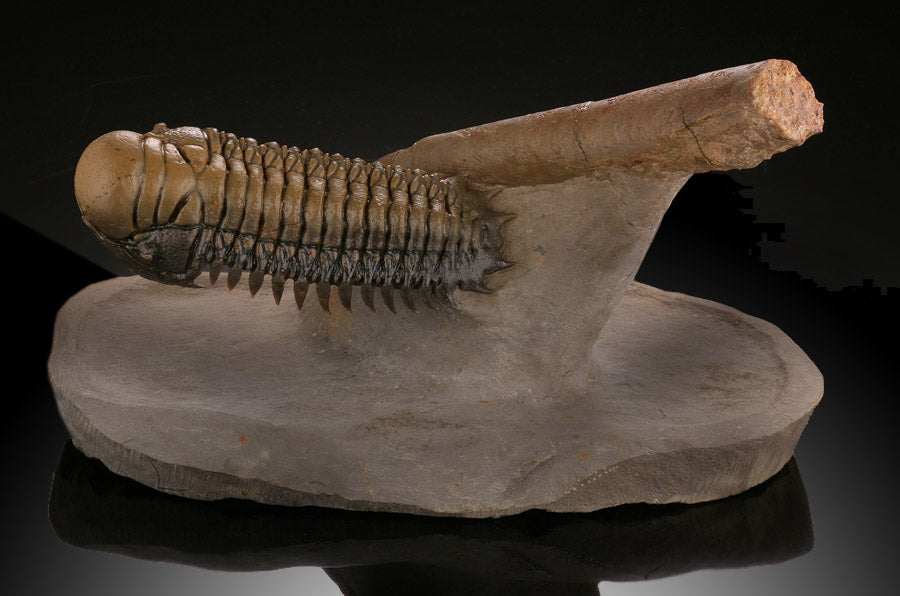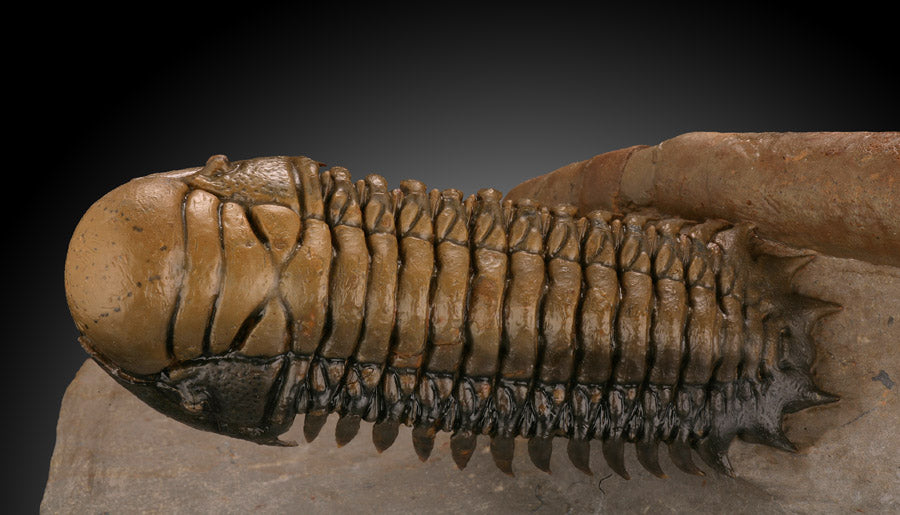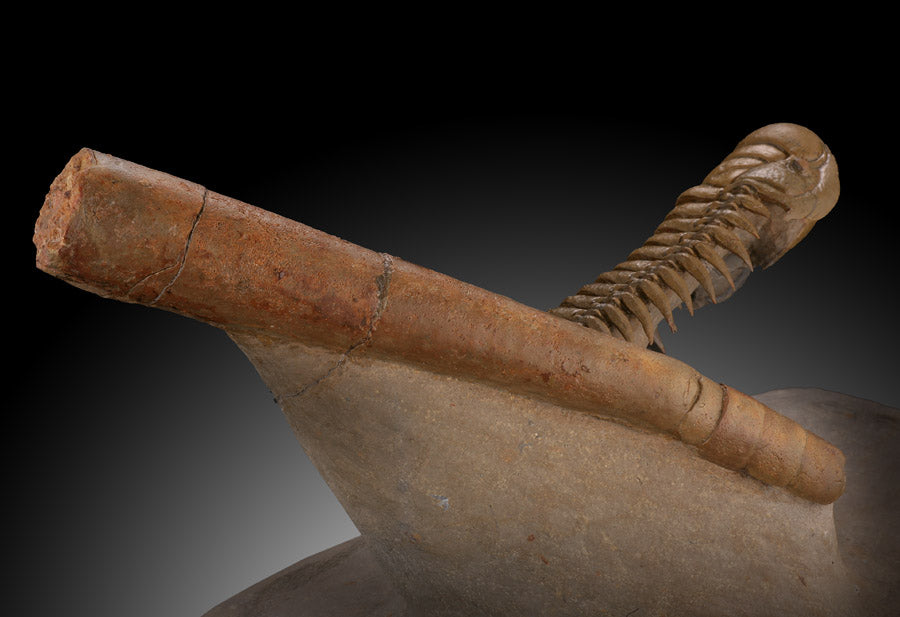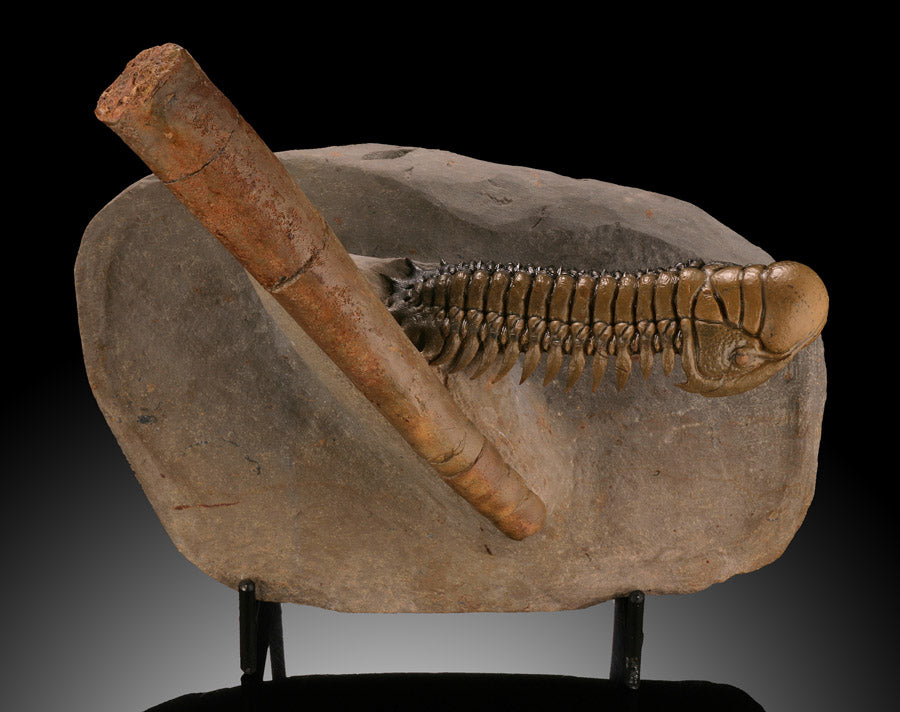
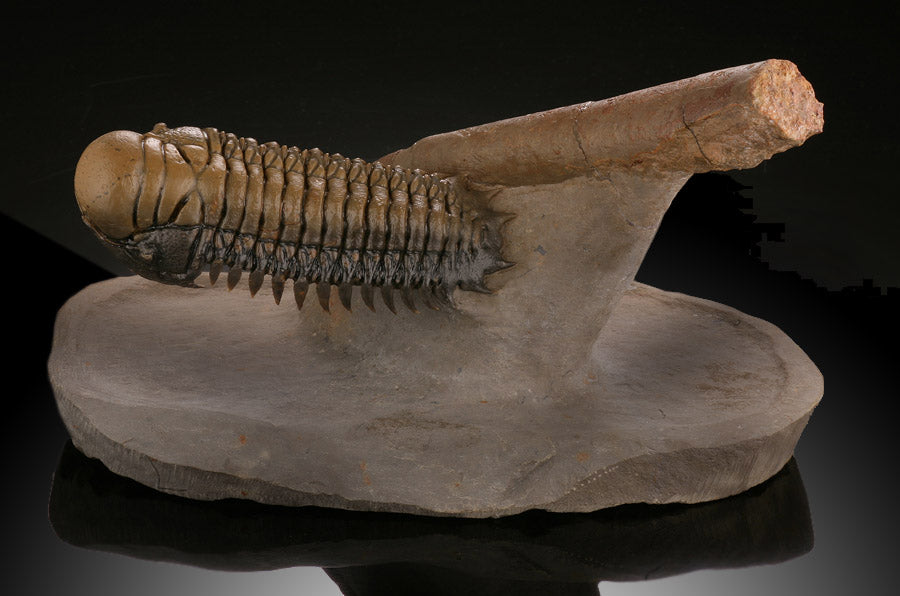
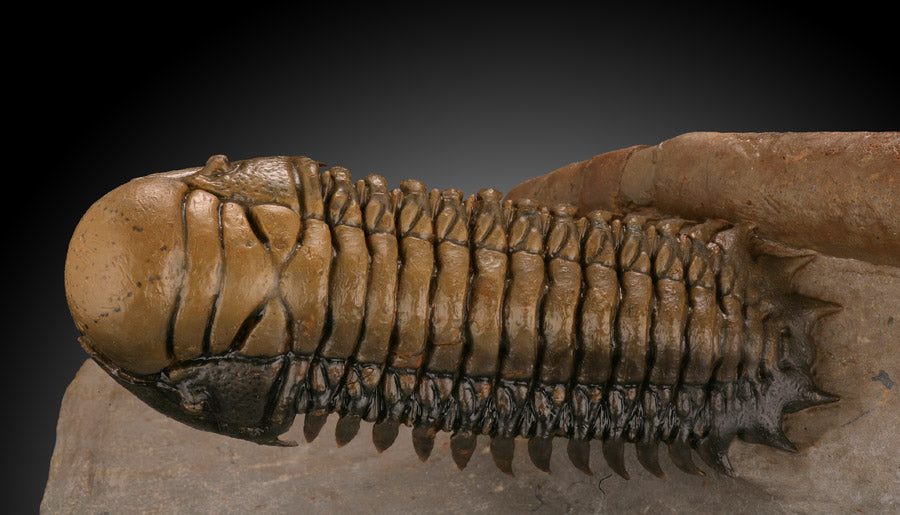
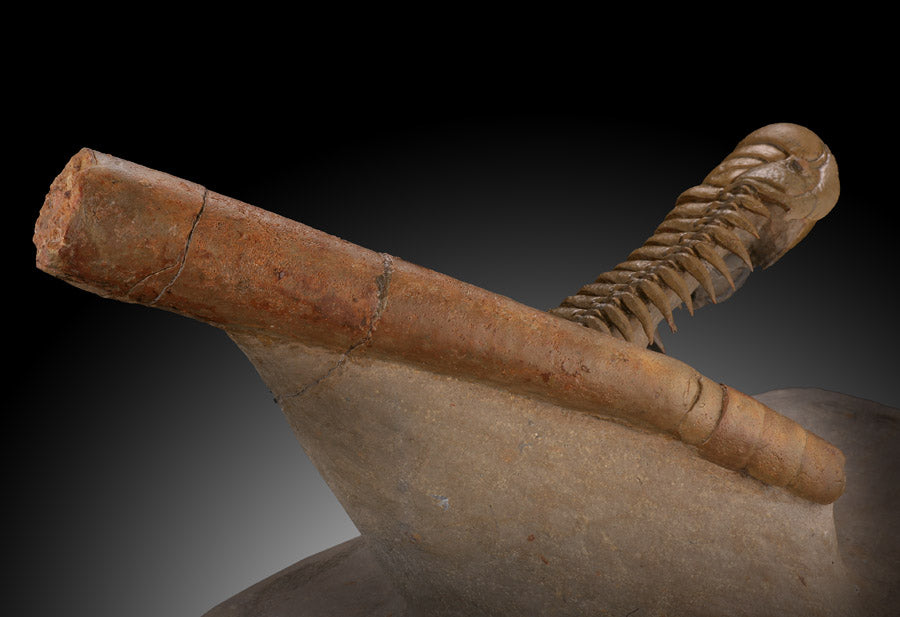
More Information
Trilobites are extinct hard shelled marine arthropods with amazingly great diversity. It is estimated there were over 15,000 known species of Trilobita, making them the most diverse animal life form that ever existed on earth. In Morocco, new Trilobite specimens are being discovered every year. Trilobites are are important as paleo-zoic guide fossils, having existed for over 270 million years. They began their existence during the early Cambrian time period (520 mya), long before dinosaurs existed but went extinct around 250 mya, before dinosaurs died out.
The name Trilobite means "three lobes", and is so named due to the long sections of the animals body, the Left & Right Pleural Lobes and the middle Axial Lobe.
Trilobites keen eye structures were highly adaptable to their environment. Some had lenses extending off of antenna like protrusions, while others had large eyes with thousands of lenses which enabled the creature to see 360 degrees
Ortocerous: 350 million years ago these extinct relatives of the chambered nautilus flourished in a warm, shallow sea which covered what is now the Sahara Desert. As the shells of these creatures accumulated on the sea floor they were buried by sediment and, over the ages, transformed into stone by physical and chemical processes. Today, this stone is quarried and polished by Moroccan craftsmen to reveal a rare glimpse of ancient life on Earth.

